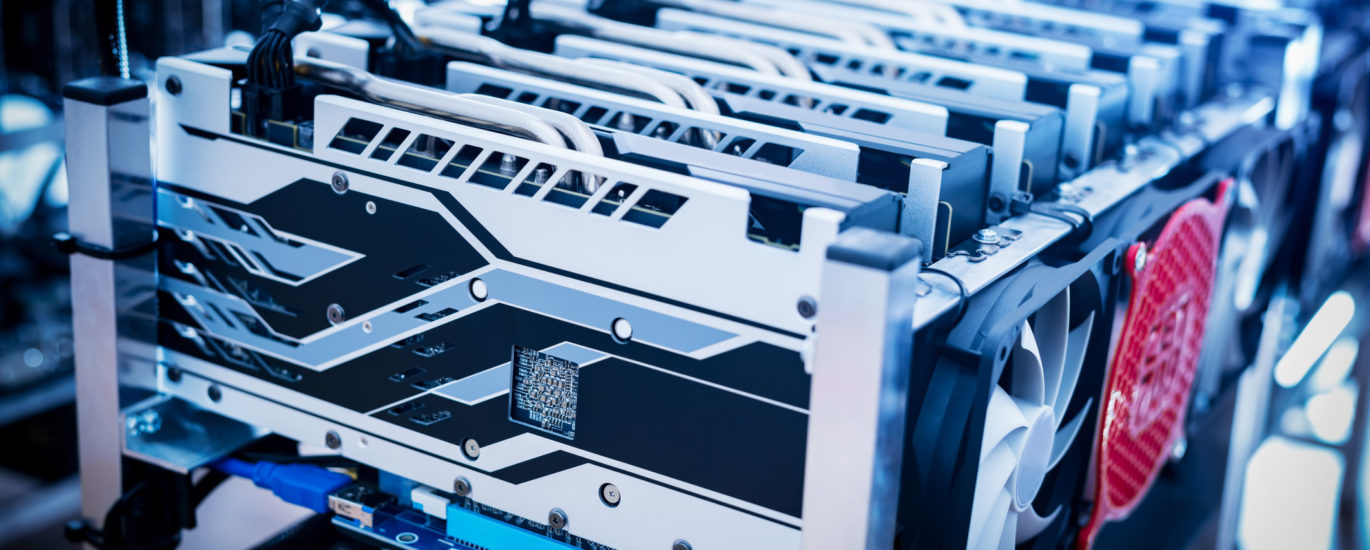Michael Mirasole
CEOMichael comes from a hi-tech background having worked in leadership roles for global companies in semiconductor and renewable energy industries.


This seems to be the most asked question right behind “is cryptocurrency mining difficult?”. The answer to both questions is a qualified YES, but depends on many factors. Here are just a few.
Knowledge and Experience
Even with basic setups (aka “rigs”), you’ll need to know some otherwise simple setup procedures. If you’re tech-savvy and just getting into this, it’ll likely feel quite natural. If not, then get ready for a learning curve, but if you stick with it, you can still get there.
Most of the learning comes when there’s a need to expand beyond simply a small, home-based operation. Concerns about cooling, space allocation, noise and electricity soon dominate the conversation.
Your Goals
If you are, in fact, interested in starting a small home-based mining operation with relatively little muss and fuss, then getting setup can be relatively straightforward, especially if you already have a starter computer with an appropriate graphics card installed (more on this in other threads). If you don’t have this, then generally someone can get started on less than $1,000 by acquiring a basic PC and installing a decent graphics card (aka “GPU”). In this situation, once operational, the return might be a modest amount of earnings depending on what you’ve decided to mine. At the moment, a single “rig” with one advanced GPU producing 114 MHs/s mining Ethereum [ETH] may generate service fees of $7/day or appx. $2,500/year.
If, however, you are interested in a larger operation with many GPU’s, you’ll need much more of the following to get going.
Available Capital
Mining costs money. The two primary drivers include equipment and electricity. Fully equipped computers (e.g. motherboards, CPU’s, memory, etc.) can be acquired fairly easily, some of which is designed specifically for cryptocurrency mining optimization. Once these are in place, GPU selection and acquisition becomes the challenge….. the veritable holy grail of mining. Today’s constrained market make these particularly difficult to purchase. If you can find them available, they are generally selling at escalating price-points due their also high demand for gaming and VR applications. Finding used units has become an alternative although naturally comes with the usual uncertainty and risk.
In total, you can expect to pay $800 – $3000/GPU fully-installed depending on each GPU’s availability and cost-to-value ratio. For example, in today’s market, a 10 GPU rig producing 1.1 GHs/s will likely run you around $20K each.
Coin Selection
There are many coins to select from, some with higher mining fees paid than others. Also, equipment and software requirements will change depending on which one you’d like to mine. In short, Bitcoin has evolved to specially designed processing systems known as ASICs while many of the other coins can be mined using more typical and flexible GPU’s, as in the example noted. It is true that Bitcoin is by far the largest coin in the crypto space, however, at the moment, mining of “alt-coins” has become a preferred route for many.
Today’s mining profitability winners include Ethereum [ETH], Conflux [CFX], Firo [FIRO] and Ravencoin [RVN], but this does change and changes often depending on transaction volume and the coin’s algorithm for miner service fees.
Where you Live
Electricity is a significant element of the operational costs for any computing based operation, crypto mining included. The rates in your area will dictate your profit potential and is a component driving the payback period on the invested capital. If you live in a relatively low-cost electricity region, you’re overall profit will be somewhat higher. In the US, the national average electricity rates hover around $0.13/kWh, but can vary widely state-to-state and elsewhere.
Cooling is also a major factor which drives energy consumption. Electronics need cool air. A lot of electronics need a lot of cool air, and may require supplemental fans and air conditioning units. If you live in an otherwise cool environment, you’ll have it a bit easier than those with hot summers to contend with.
In the example above, at $0.13/kWh, you can expect to pay $300-400/mo for a 10 GPU rig on grid-provided electricity alone. Add your cooling requirements to this as appropriate. Of course, always consider renewable energy like solar and wind power as an alternative.
Your Time
For small rigs, time is small. For larger and larger rigs, your required time commitment is also larger and larger. Be prepared to spend time installing, optimizing and baby-sitting your systems. Once setup, it’s easy to think that they’ll manage themselves, and truthfully, many will….. however, some won’t. All of the variables involved in optimizing GPU performance to maximum profitability will require that you find each GPU’s threshold for stable operation and then work just below it. If your goal is to get the most for your money, this process will take time.
Threshold for Risk
In this market, things change. Sometimes, they change drastically. A common strategy is to mine cryptocurrencies and keep them in their native coin as opposed to immediately converting to cash. In this situation, monitoring the ups and down of the coin’s market fluctuations can be psychologically taxing. Be prepared. Each strategy depends on your own personal risk threshold and, perhaps, cash-flow needs.
In conclusion
In the end, with enough of these attributes, cryptocurrency mining combined with the incredible upside growth potential of digital currencies, albeit volatile, can make cryptocurrency and, in particular, mining a profitable endeavor. Citing the example above, a 10 advanced-GPU rig in an average US location can produce profit of $1,900/month and a capital payback of 10-11 months. If you find that cryptocurrency mining is your thing, enjoy the process, but hold on tight because it’s going to be a rollercoaster of a ride.